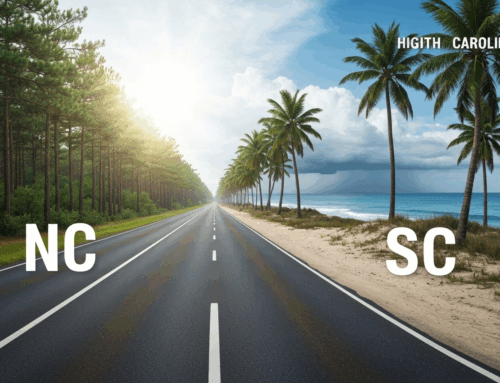The Rising Challenge of Securing Home Insurance
Homeowners across the United States are facing a complex and increasingly challenging landscape when it comes to securing and maintaining adequate home insurance coverage. What was once a relatively stable and predictable part of homeownership has, for many, become a source of significant concern and financial strain. Premiums are escalating at rates that outpace general inflation, and in some regions, simply finding an insurer willing to offer coverage is becoming difficult. This phenomenon, often referred to as a hardening insurance market, is not confined to areas typically considered high-risk; even properties in less volatile locations are feeling the impact. The dream of homeownership carries with it the fundamental need for protection against unforeseen disasters, making the current difficulties in obtaining and affording this crucial coverage a pressing issue for millions of Americans. Understanding the root causes behind these shifts is the first step in successfully Navigating Home Insurance Availability Issues.
The increasing frequency and severity of natural disasters play a significant role in this evolving challenge. Events like wildfires, hurricanes, severe convective storms (tornadoes, thunderstorms, hail), and floods are causing billions of dollars in insured losses annually. When insurance companies face substantial payouts from these events, they often respond by seeking rate increases from state regulators, tightening underwriting standards, or reducing their exposure in vulnerable areas. This can lead to higher costs for consumers or, in more extreme cases, a complete withdrawal of coverage options in certain markets. The unpredictability of future climate patterns adds another layer of complexity, making it harder for insurers to accurately model risk and price policies effectively.
Beyond large-scale catastrophes, other factors contribute to rising costs. The cost of construction materials and labor has increased significantly in recent years. When a home is damaged or destroyed, the expense to repair or rebuild it is much higher than it used to be. Since the primary purpose of homeowners insurance is to cover these rebuilding costs, insurers must collect enough premium to account for this increased potential payout. Furthermore, inflationary pressures across the economy can affect insurers’ operational costs and the cost of claims adjusters and other services needed after a disaster. These combined factors create a challenging environment for both insurers and homeowners, making Navigating Home Insurance Availability Issues a critical task for protecting one’s property and financial future.
Behind the Shifts What’s Driving Insurance Availability Issues
Pinpointing the exact causes behind the current wave of insurance availability issues requires looking at a confluence of interacting factors. It’s not a single culprit but rather a complex web of economic, environmental, and regulatory pressures that are reshaping the market. At the forefront are the undeniable impacts of a changing climate, leading to more frequent and intense weather events. Wildfires are consuming larger areas and impacting communities previously considered less susceptible. Hurricanes are rapidly intensifying and causing catastrophic damage further inland. Hailstorms are becoming more destructive, and flooding risks are expanding beyond traditional flood plains. Insurers, whose business model relies on predicting and pooling risk, are struggling to keep pace with these escalating threats.
Consider the financial impact. When a single hurricane can lead to tens of billions of dollars in insured losses, as seen with past storms like Hurricane Ian or predictions for events like Hurricane Helene, it significantly impacts an insurer’s financial health. Repeated hits from various perils in different regions strain reserves and necessitate adjustments to their business strategy. This leads to rate increases being sought from state insurance departments. For example, a major insurer in California recently sought a significant rate hike after experiencing substantial wildfire losses. These increases are necessary for insurers to remain solvent and able to pay future claims, but they place a growing burden on homeowners.
Beyond the direct cost of claims, the rising expense of reinsurance also plays a major role. Reinsurance is essentially insurance for insurance companies. Primary insurers purchase reinsurance to protect themselves from massive losses resulting from large-scale events. As the risk landscape becomes more volatile due to climate change and other factors, the cost for insurers to buy this protection has skyrocketed. These increased costs are then passed on to policyholders through higher premiums.
Regulatory environments in different states can also influence availability. In an effort to keep insurance affordable for consumers, some states have regulations that limit how much or how quickly insurers can raise rates. While well-intentioned, if rates are kept artificially low relative to the actual risk and cost of doing business, insurers may decide they cannot profitably operate in that state and choose to limit their exposure, either by not taking on new policies or non-renewing existing ones. This creates a situation where insurance might be cheaper for some, but availability becomes severely restricted for many others.
Rising construction costs, driven by inflation and supply chain issues, further exacerbate the problem. The cost to repair or rebuild a home damaged by a covered peril like fire or wind is significantly higher than it was just a few years ago. This means the coverage amount needed to fully restore a home has increased, and consequently, the premium required to support that higher coverage also rises. Homeowners who haven’t updated their coverage to reflect current rebuilding costs risk being underinsured.
In summary, the drivers behind the current availability issues are multifaceted:
- Increasing frequency and intensity of natural disasters
- Escalating costs associated with rebuilding and repairs
- Rising costs in the global reinsurance market
- State-specific regulatory pressures affecting profitability
- General inflationary trends impacting business operations
Understanding these underlying causes is crucial for homeowners as they navigate this challenging market and seek to secure adequate protection.
When Coverage Disappears Insurer Pullbacks and Cancellations
One of the most alarming aspects of the current insurance climate for homeowners is the increasing trend of insurers pulling back from certain markets or canceling existing policies. This isn’t a phenomenon limited to a few isolated incidents; it’s becoming a widespread challenge in various parts of the country prone to different types of natural disasters, impacting the ability of homeowners to continue Navigating Home Insurance Availability Issues within the private market.
In areas susceptible to wildfires, such as parts of California, homeowners have experienced large numbers of policy non-renewals. Insurers analyze their risk exposure and, when the concentration of risk in a specific geographic area becomes too high, they may decide to reduce their presence there to protect their financial stability. This can leave homeowners scrambling to find alternative coverage, often with little notice. Similarly, coastal regions facing increased hurricane threats or areas prone to severe hailstorms are also seeing insurers re-evaluate their portfolios and potentially limit coverage options or increase deductibles significantly, particularly for wind or hail damage. Understanding hurricane deductibles, for instance, has become more critical as insurers shift more of the initial risk onto policyholders in vulnerable zones.
The reasons behind these pullbacks are primarily financial. Insurers are businesses that need to remain profitable to pay claims. When potential losses from catastrophic events outweigh the premiums they collect, they must adjust their strategy. This might involve:
- Non-renewals: Choosing not to renew a policy at the end of its term, often in accordance with state regulations regarding notice periods.
- Cancellations: Terminating a policy mid-term, typically for specific reasons outlined in the policy contract or state law, such as failure to pay premiums or significant changes in risk (e.g., property condition issues not addressed). While mid-term cancellations without cause are generally restricted, non-renewals offer insurers a way to reduce exposure over time.
- Restricting New Business: Simply stopping the sale of new homeowners insurance policies in certain areas or for specific types of properties deemed too risky.
- Altering Coverage Terms: Increasing deductibles, excluding certain perils (if state law allows), or placing sub-limits on coverage for specific types of damage.
The impact on homeowners can be severe. Losing private insurance coverage can make it difficult, if not impossible, to secure or maintain a mortgage, as lenders require proof of adequate insurance protection. Beyond the financial requirement, the emotional toll of suddenly losing coverage and facing the prospect of significant financial loss from a disaster without insurance is immense. Finding new coverage can be a time-consuming and stressful process, often resulting in significantly higher premiums or less comprehensive coverage options.
This trend highlights the interconnectedness of risk, insurance markets, and consumer impact. As climate risks mount, the areas where private insurance is readily available and affordable are shrinking, pushing more homeowners towards alternative, often less desirable, solutions. Navigating Home Insurance Availability Issues increasingly means understanding the factors that make a property insurable in the eyes of a private company and what alternatives exist when private options disappear.
Understanding State-Backed ‘Last Resort’ Insurance Plans
When private insurance options become scarce or unaffordable in certain high-risk areas, state governments sometimes step in to establish what are often referred to as insurer of last resort plans. The most well-known examples include the California FAIR Plan (Fair Access to Insurance Requirements) and various coastal or windstorm pools in hurricane-prone states like Florida and along the Gulf and Atlantic coasts, including the Carolinas. These plans are designed to ensure that property owners who cannot obtain coverage in the voluntary market can still get basic insurance protection.
The primary goal of these plans is to provide a safety net, preventing properties from becoming uninsurable due to geographic risk factors outside the homeowner’s control. They typically offer coverage for specific perils, often focusing on the major risks that have caused private insurers to pull back from the area. For example, a FAIR Plan might primarily cover fire damage in wildfire-prone regions, while a coastal plan might focus on windstorm damage in hurricane zones. However, it’s crucial for homeowners to understand that these plans are generally not equivalent to a comprehensive private homeowners policy.
Key characteristics and limitations of state-backed plans often include:
- Limited Coverage: They may only cover a narrow range of perils compared to standard policies. Flood insurance, for example, is typically not included and must be purchased separately through the National Flood Insurance Program (NFIP) or a private flood insurer, even in areas where flooding is a primary risk. This gap is a significant part of Navigating Home Insurance Availability Issues, especially in coastal or low-lying areas. Knowing if you need flood insurance is vital, as most standard homeowners policies exclude this coverage.
- Higher Costs: Premiums for coverage through last resort plans are often higher than what homeowners would pay for equivalent coverage in the voluntary market, if it were available. These plans must cover potentially significant losses from high-risk properties, and their pricing reflects this.
- Lower Coverage Limits: The maximum coverage amounts offered may be capped, potentially leaving homeowners underinsured if their home’s rebuilding cost exceeds the plan’s limit.
- Basic Policies: The policies offered are typically very basic, providing essential coverage but lacking many of the endorsements or expanded coverages available with private insurers.
- Transparency Issues: In some cases, the operations and finances of these plans have faced scrutiny regarding transparency and accountability, adding complexity for policyholders.
While state-backed plans serve a vital purpose in providing access to coverage when private options fail, relying solely on them comes with potential drawbacks. Homeowners insured through these plans may find themselves with gaps in coverage, higher costs, and less flexibility compared to the private market. The increasing reliance on these plans, as more properties are pushed out of the voluntary market, also puts financial pressure on the plans themselves, potentially leading to further cost increases or assessments passed on to policyholders (sometimes even those not insured by the plan, depending on the state’s structure).
For homeowners, understanding if they might need to explore a state-backed option and what that coverage entails is a critical part of Navigating Home Insurance Availability Issues. It requires a careful review of the plan’s policy terms and comparing them against the actual risks their property faces.
The Hidden Risk Are You Underinsured
Even for homeowners who successfully maintain insurance coverage, a significant hidden risk lurks: underinsurance. Being underinsured means that the coverage limits on your homeowners policy are insufficient to fully cover the cost of rebuilding your home or replacing your belongings after a significant loss, such as a fire or major storm. Experts estimate that a substantial percentage of U.S. homeowners may be underinsured, a dangerous situation particularly as rebuilding costs climb and weather disasters intensify.
Why does underinsurance happen? Several factors contribute:
- Outdated Policy Limits: Homeowners may set their dwelling coverage limit based on the market value of their home or the original purchase price, neither of which accurately reflects the cost to rebuild. Rebuilding costs are driven by local construction expenses, materials, and labor, which can fluctuate independently of market value.
- Rising Construction Costs: As discussed earlier, the cost of materials like lumber, steel, and roofing, as well as skilled labor, has increased dramatically. A policy limit set five or ten years ago might be woefully inadequate to cover the same rebuilding project today.
- Policy Changes Over Time: Homeowners might not fully understand changes made to their policy at renewal or may have opted for lower coverage to save on premiums without realizing the potential consequences. Understanding nuances like the coinsurance requirement in a policy is crucial to avoid penalties in the event of a partial loss if the home is not insured to a certain percentage of its replacement cost.
- Lack of Endorsements: Standard policies may not include coverage for specific risks or may have sub-limits on certain items. Without endorsements for things like valuable possessions or updated building codes, coverage can fall short.
The consequences of being underinsured can be financially devastating. After a total loss, homeowners may receive an insurance payout that is significantly less than the actual cost to rebuild their home to its previous condition. This leaves them responsible for covering the shortfall, potentially totaling tens or even hundreds of thousands of dollars out-of-pocket. This financial gap can prevent families from rebuilding their lives and returning to their homes, as tragically seen after large-scale fires or hurricanes where many affected homeowners found their coverage inadequate.
It’s not just the dwelling itself; underinsurance can also apply to personal property and additional living expenses (ALE) or loss of use coverage. If the limit for personal property is too low, homeowners may not be able to replace all their belongings. If the ALE limit is insufficient, they may run out of funds to cover temporary housing and increased living costs while their home is being repaired or rebuilt. Loss of use coverage explained can highlight the importance of this often-overlooked policy component.
Actively checking and understanding your coverage is a vital step in Navigating Home Insurance Availability Issues and protecting your financial well-being. Don’t assume your current coverage is sufficient based on outdated information or your home’s market value. Focus on the replacement cost of your home and ensure your policy limits, including those for personal property and additional living expenses, are adequate for today’s costs.
Navigating Home Insurance Availability Issues Practical Steps for Homeowners
Given the complexities and challenges discussed, actively Navigating Home Insurance Availability Issues is essential for every homeowner. While the market may be difficult, there are concrete steps you can take to improve your situation, understand your options, and ensure you have the best possible protection for your property and finances.
1. Review Your Policy Annually (at a Minimum): Don’t let your policy simply renew without examination. Take the time each year to review your coverage limits, deductibles, and any endorsements. Compare your dwelling coverage limit to the estimated rebuilding cost of your home in today’s dollars. Consider inflation and rising construction costs. If you’ve made significant renovations or additions, update your coverage accordingly. Also, review your personal property coverage to ensure it’s adequate for replacing your belongings.
2. Understand What Your Policy Covers (and Excludes): Homeowners insurance policies are complex legal documents. Familiarize yourself with the covered perils and, just as importantly, the exclusions. Standard policies typically cover damage from events like fire, windstorms (though watch out for specific deductibles in coastal areas), and theft. However, they almost always exclude damage from floods and earthquakes, which require separate policies. Understanding uncovered claims in standard property insurance can help you identify potential gaps.
3. Assess Your Property’s Specific Risks: Consider the natural disaster risks prevalent in your geographic area. Are you in a flood zone? Is your home in an area prone to wildfires, hurricanes, or severe thunderstorms? Take steps to mitigate these risks where possible. This not only reduces the likelihood of a claim but can sometimes make your property more attractive to insurers or qualify you for discounts. This includes efforts like fire-resistant landscaping, elevating structures in flood zones, installing storm shutters, or simply performing vital homeowner maintenance tips to prevent costly damage.
4. Shop Around and Work with an Independent Agent: Don’t rely on quotes from just one insurer. Insurance rates and availability can vary significantly between companies. An independent insurance agent can be an invaluable resource. They work with multiple insurance carriers and can shop the market on your behalf to find the best coverage options and pricing available for your specific needs and risk profile. They can also help you compare policy terms and explain complex coverages.
5. Understand Deductibles: Your deductible is the amount you pay out-of-pocket before your insurance coverage kicks in. Higher deductibles mean lower premiums, but you’ll pay more yourself in the event of a claim. Be aware of specific deductibles that may apply to certain perils, such as hurricane or windstorm deductibles, which are often a percentage of your home’s insured value and can be substantial in high-risk areas. Understanding windstorm deductibles is crucial for coastal residents.
6. Improve Your Home’s Resilience: Investing in making your home more resistant to common perils can pay dividends. This might involve updating roofing to be more wind-resistant, installing smart home technology for leak detection, reinforcing garage doors, or taking steps to reduce wildfire risk around your property. Some insurers offer discounts for mitigation efforts. Resources like the Insurance Information Institute offer valuable information on making your home more resilient. (Outbound Link 1: https://www.iii.org/article/how-to-make-your-home-more-resilient-against-disaster)
7. Maintain Good Credit and Claims History: While not directly related to the physical availability of insurance in high-risk zones, factors like your credit score (in most states) and your history of filing claims can impact the rates you are offered by private insurers. Maintaining a good insurance and credit history can make you a more attractive customer.
8. Be Prepared for Potential Non-Renewal: If you live in an area experiencing insurance market instability, start researching alternative options before your current policy is set to expire. Don’t wait until you receive a non-renewal notice. Explore other private insurers who may still be writing business in your area and understand the options available through your state’s last resort plan if necessary. Knowing can an insurance company cancel your policy can help you understand the reasons for potential non-renewal beyond geographic risk.
9. Advocate for Risk Mitigation in Your Community: Sometimes, the challenges are community-wide. Supporting local initiatives for wildfire prevention, flood control, or updated building codes can collectively lower the risk profile of your area, potentially making it more attractive to insurers in the long run. (Outbound Link 2: https://www.fema.gov/emergency-managers/risk-management/building-codes – FEMA’s resource on building codes and resilience)
Navigating the current landscape of home insurance availability requires proactivity and a thorough understanding of your policy, your property’s risks, and the market dynamics. By taking these practical steps, homeowners can better position themselves to secure and maintain the essential coverage they need.
Have questions? Contact us here.






